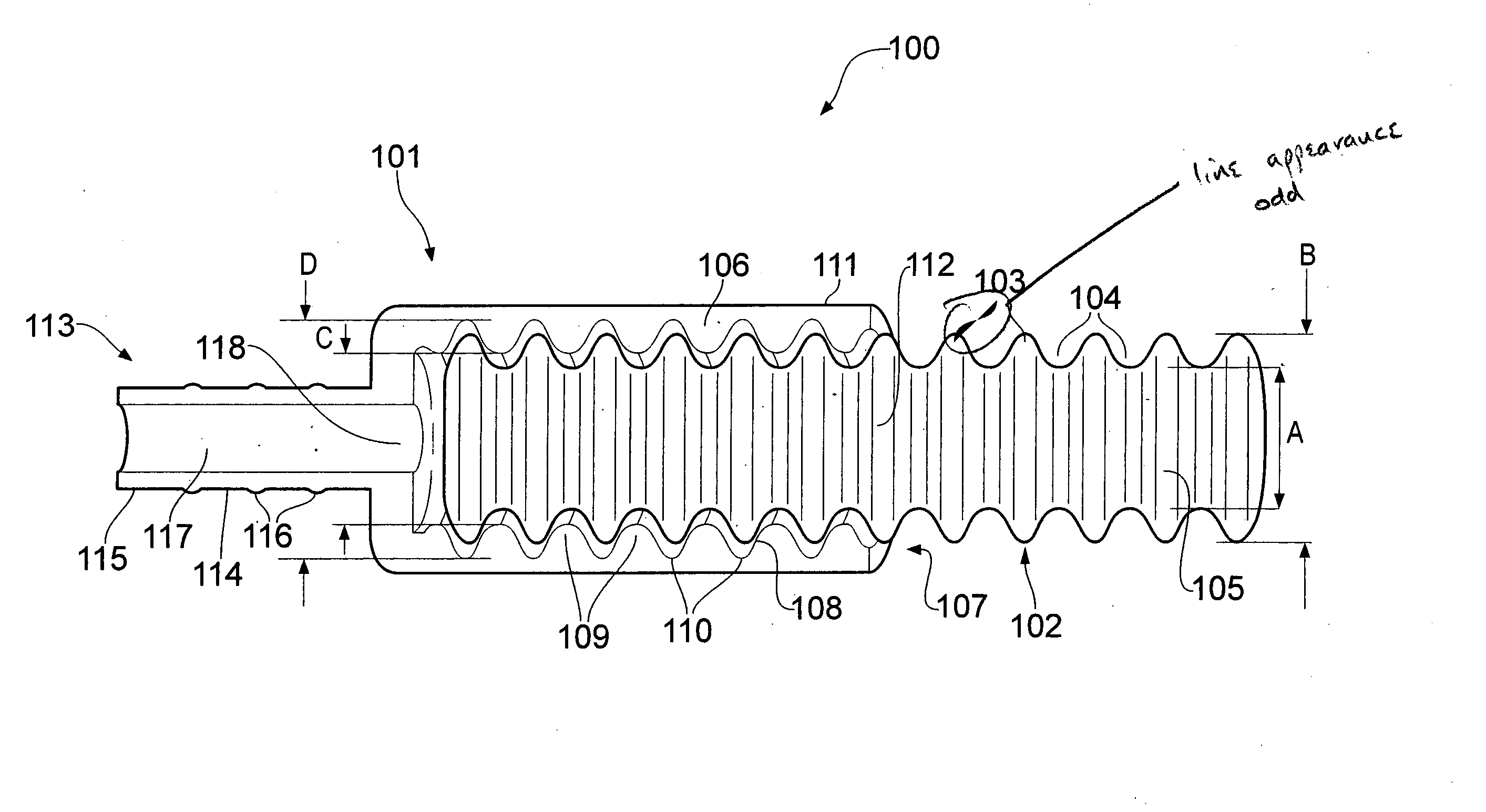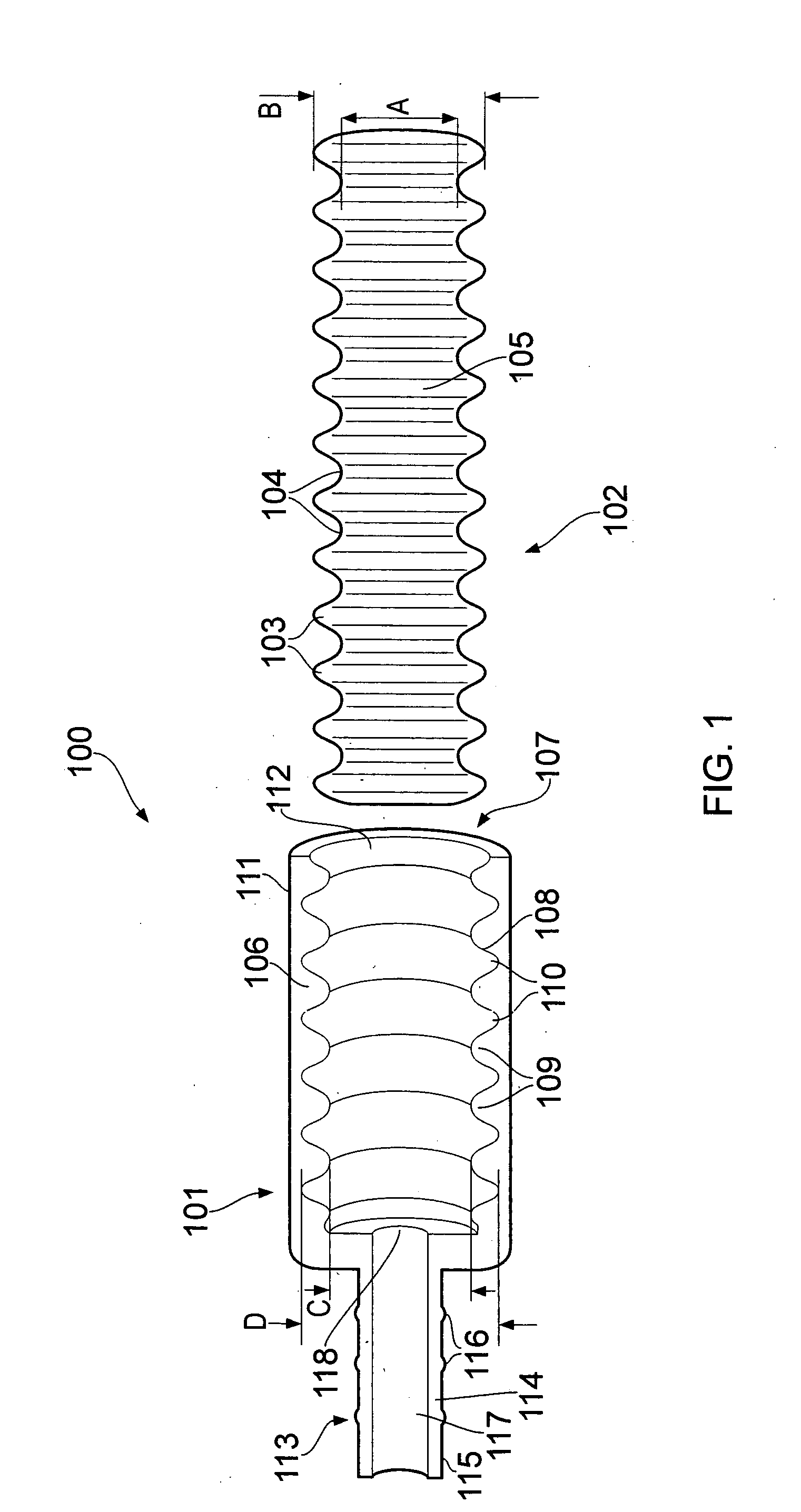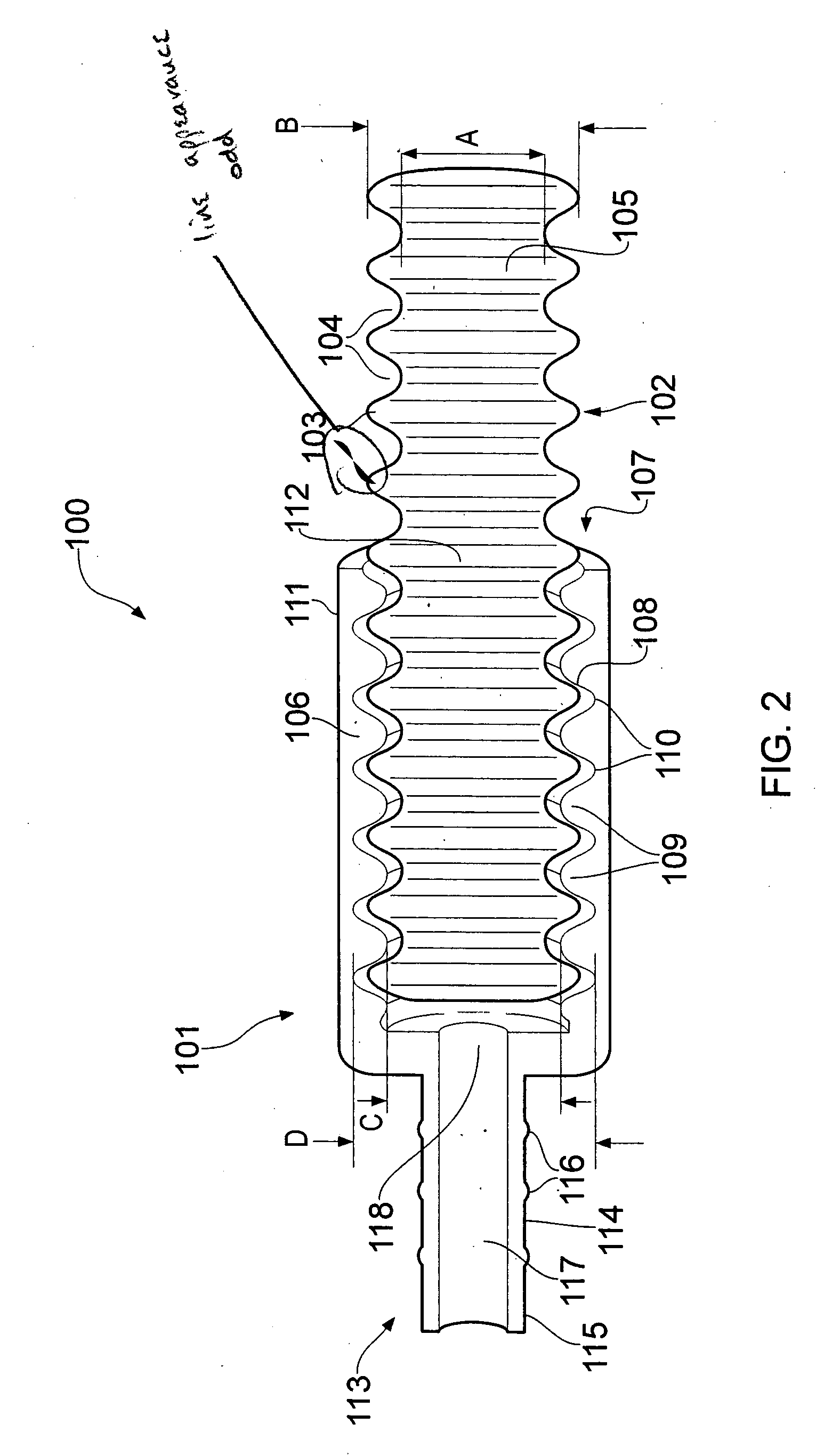Connector
a technology of connecting rods and connectors, applied in the direction of pipe joints, non-disconnectible pipe joints, sleeves/socket joints, etc., can solve the problems of not all pipes are made from materials having suitable properties, not always desirable to put pipes under stress, and more flexible pipes such as garden hoses cannot withstand such squeezing and require different connectors. , to achieve the effect of strong and reliable connection, convenient and convenient use, and simple us
- Summary
- Abstract
- Description
- Claims
- Application Information
AI Technical Summary
Benefits of technology
Problems solved by technology
Method used
Image
Examples
first embodiment
[0039]Referring to FIG. 3, a connection system 300 according to a second preferred embodiment of the present invention is similar to the connection system 100 according to the first preferred embodiment of the invention and the same reference numerals are used for similar components. In particular, it can be seen that the connection system 300 according to the second preferred embodiment has a connector 101 identical to that of the first preferred embodiment. However, in the second preferred embodiment, the connector 101 connects to a pipe 302 that has a smooth outer surface 303, e.g. having a constant diameter E in its dehydrated state. The diameter E of the outer surface 303 of the pipe 302 in its dehydrated state is approximately the same as the maximum diameter B of the pipe 102 of the In other words, the maximum diameter D of the cavity 107 of the connector 101 is greater than the diameter E of the pipe 302 and the minimum diameter C of the cavity 107 is less than the diameter...
third embodiment
[0040]Referring to FIG. 4, a connection system 400 according to a third preferred embodiment of the present invention is similar to the connection system 100 of the first preferred embodiment of the invention and the same reference numerals are used for similar components. However, in the third embodiment, the cavity 107 of a modified connector 401 has an inner surface 402 corrugated with grooves 403 that have a widening towards their base. This means that the pair of ridges 404 on either side of each groove 403 form a narrowing or neck 405 toward the opening of each ridge 404. As the pipe 102 expands on hydration, its ridges 103 expand into the grooves 403 of the connector 401. In particular, they expand into the widened part of the grooves 403. This has the effect of locking the ridges 103 of the pipe 102 in the grooves 403 of the connector 301, strengthening the connection between pipe 102 and connector 401.
[0041]The connector 101 of the first embodiment can be also be modified i...
PUM
| Property | Measurement | Unit |
|---|---|---|
| outer width | aaaaa | aaaaa |
| outer width | aaaaa | aaaaa |
| width | aaaaa | aaaaa |
Abstract
Description
Claims
Application Information
 Login to View More
Login to View More - R&D
- Intellectual Property
- Life Sciences
- Materials
- Tech Scout
- Unparalleled Data Quality
- Higher Quality Content
- 60% Fewer Hallucinations
Browse by: Latest US Patents, China's latest patents, Technical Efficacy Thesaurus, Application Domain, Technology Topic, Popular Technical Reports.
© 2025 PatSnap. All rights reserved.Legal|Privacy policy|Modern Slavery Act Transparency Statement|Sitemap|About US| Contact US: help@patsnap.com



